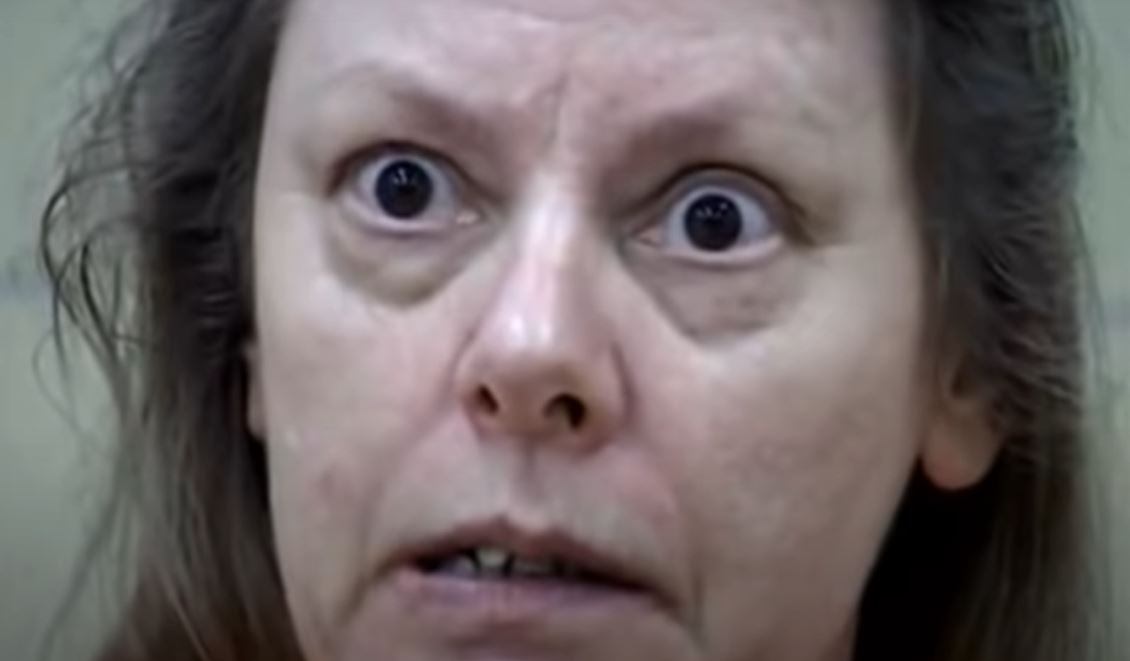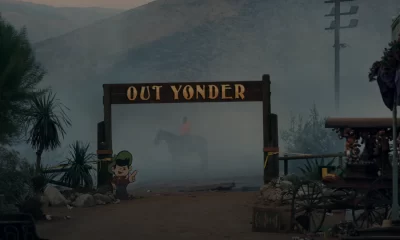Horror Stories
Aileen Wuornos: Echoes of Madness and the Haunting Trail of a Serial Killer
Aileen Wuornos Unleashes Shocking Revelations in Pre-Execution Video: A Controversial Verdict. Check the video down here!

Scroll down for the exclusive video!
Introduction
Aileen Wuornos was an infamous figure in American criminal history, known as the “Damsel of Death” and “Highway Serial Killer.” Her life and crimes captivated the public’s attention, sparking debates and discussions about her motives, mental health, and the circumstances that led her down a dark path. This article delves into the life of Aileen Wuornos, examining her troubled background, the crimes she committed, and the controversial legacy she left behind.
Early Life and Troubled Background
Aileen Wuornos was born on February 29, 1956, in Rochester, Michigan. Her childhood was tumultuous, marked by instability and adversity. Her parents divorced shortly before she was born, and her father, Leo Dale Pittman, was convicted of child molestation. Wuornos and her brother were subsequently adopted by their maternal grandparents.
Wuornos faced significant challenges throughout her life. She engaged in promiscuous behavior at a young age, engaging in sexual activities in exchange for money and survival. She dropped out of school, ran away from home, and lived a transient lifestyle. These early experiences would have a profound impact on her later actions.
The Killing Spree
In the late 1980s and early 1990s, Wuornos embarked on a killing spree that shocked the nation. She murdered several men, most of whom she encountered while working as a sex worker along the highways of Florida. Wuornos claimed that she acted in self-defense, stating that the men had attempted to sexually assault or harm her.
Here are the details of the murders:
- Richard Mallory, a 51-year-old white man and shop owner, was the first victim in 1989. He had picked up a prostitute along Interstate 75 in Florida. His body was found several miles away from his abandoned car, with multiple gunshot wounds to the chest.
- David Spears, a 43-year-old construction worker, was found nude and shot six times in the torso in Citrus County in June 1990.
- Charles Carskaddon, a 40-year-old part-time rodeo worker, was discovered in Pasco County a few days after Spears’ body was found. He had suffered nine gunshot wounds to the chest and stomach.
- Troy Burress, a 50-year-old salesman, was reported missing and later found dead in Marion County in August 1990. Despite advanced decomposition, the medical examiner determined that he had been shot twice in the torso.
- Charles “Dick” Humphreys, a retired Air Force major, police chief, and Florida child-abuse investigator, was found dead in Marion County in September 1990. His body, fully clothed, had multiple gunshot wounds to the head and torso. Humphreys’ car was later discovered in Suwannee County.
- Peter Siems, a 65-year-old man, left central Florida for New Jersey in June 1990. His car was found in Orange Springs, Florida, on July 4, 1990, but his body has never been located. Witnesses reported seeing two women near his car.
- The body of Walter Antonio, a 62-year-old man, was discovered partially disrobed in a remote area of Dixie County in November 1990. He had been shot four times in the back and head. Antonio’s car was found five days later in Brevard County.
Despite her claims of self-defense, Wuornos was ultimately convicted of the murders. Her trials were highly publicized, and her combative and erratic behavior during the proceedings did not help her case. A combination of circumstantial evidence, witnesses, and Wuornos’s own confession led to her conviction and subsequent death sentence.
Controversies and Legal Battles
Wuornos’s case attracted significant controversy and sparked debates regarding her mental state and the role of her troubled past in influencing her actions. Some argued that she was a victim of circumstance, having experienced a lifetime of abuse and trauma, while others believed that she was a cold-blooded serial killer who deserved punishment.
Her case also brought attention to the broader issue of violence against women and the exploitation of vulnerable individuals in society. Advocates argued that Wuornos’s crimes were a tragic consequence of her past and the circumstances she found herself.
Before the Execution
In the days leading up to her execution, Wuornos displayed behavior that many described as erratic and unstable. She had been diagnosed with borderline personality disorder and antisocial personality disorder, among other mental health conditions. These disorders are characterized by difficulties in managing emotions, impulse control, and maintaining stable relationships.
Wuornos made several public statements and gave interviews where she expressed extreme emotions, including anger, fear, and defiance. Her erratic behavior and erratic statements fueled intense media coverage and public fascination with her case.
On the day before her execution, Wuornos made headlines once again. In an interview with a British documentary crew, she made shocking and disturbing claims. Wuornos alleged that she had been tortured, raped, and forced into prostitution from a young age. She also claimed that her victims were not random individuals but rather individuals who had threatened or attempted to harm her during the course of her sex work.
These statements further heightened the controversy and fascination surrounding Wuornos. Some viewed her claims as an attempt to gain sympathy or justify her crimes, while others saw them as a desperate plea for understanding and recognition of the trauma she had experienced.
It is important to approach these claims with caution, as Wuornos’ mental state and the circumstances surrounding her life and crimes have been subject to ongoing debate and interpretation. While her actions cannot be excused, understanding the complexities of her mental health and life experiences can provide insight into the broader context of her crimes.
Legacy and Execution
Aileen Wuornos was executed by lethal injection on October 9, 2002. Her case and subsequent execution left a lasting impact on popular culture and public consciousness. Numerous books, documentaries, and films have been made about her life and crimes, often shedding light on the complexities of her character and the societal factors that contributed to her downfall.
Conclusion
Aileen Wuornos’s life was a tragic tale of abuse, instability, and violence. While her crimes were undeniably heinous, her case serves as a reminder of the importance of addressing the underlying issues that can lead individuals down dark paths. Wuornos’s story is a cautionary tale, illustrating the devastating consequences of a troubled life left unaddressed. It also forces us to reflect on the complexities of the human condition and the desperate need for compassion and support for those most vulnerable in our society.






















